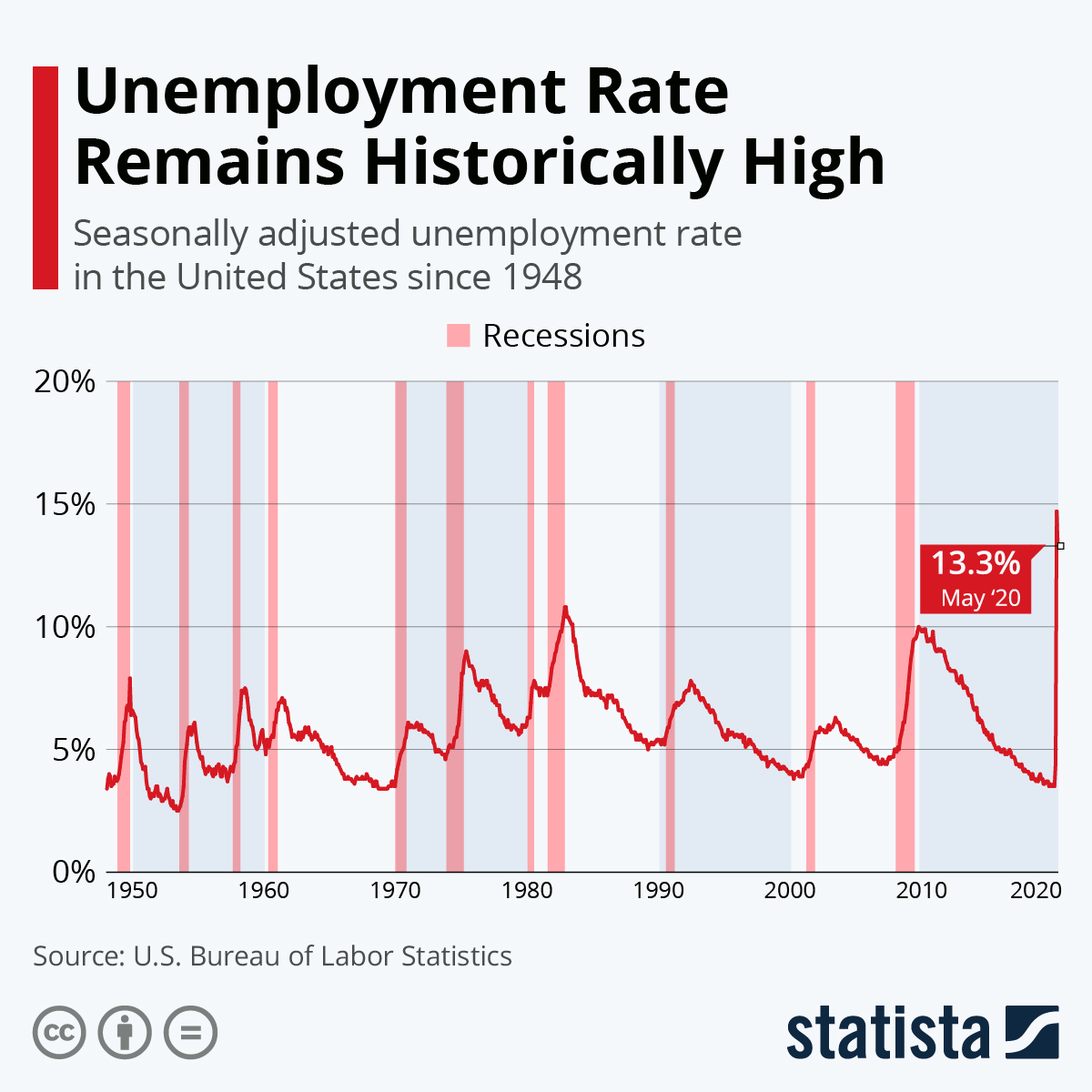Despite the fact that total nonfarm employment rose by 2.5 million in May, the unemployment rate remained at a level unseen since the Great Depression. According to the Bureau of Labor Statistics' latest jobs report, the unemployment rate dropped to 13.3 percent in May, down from 14.7 percent in April.
As the following chart shows, that is still higher than anything seen in the post-war era. 75 years after the end of the Second World War, the United States along with many other countries in the world are facing what U.N. Secretary-General Antonio Guterres recently described as the most challenging crisis since WWII. Before the coronavirus pandemic, the highest unemployment rate in post-war America, 10.8 percent, was recorded in December 1982, at the trough of a 16-month recession. The highest level of unemployment in recent history was observed in late 2009, shortly after the official end of the Financial Crisis. Back then the unemployment rate briefly hit 10 percent. Since then, the level of joblessness had gradually dropped to a 50-year low in February 2020, right before the pandemic hit American shores.
According to the Bureau of Labor Statistics, the number of unemployed persons declined by 2.1 million to 21.0 million in May, 15.3 million of which reported being temporarily laid off. Unsurprisingly, given the nature of the measures taken to contain COVID-19, the leisure and hospitality sector is still the worst affected by unemployment with 4.4 million unemployed workers and an unemployment rate of 35.9 percent in May. Other industries heavily affected include wholesale and retail trade with 2.9 million unemployed workers and education and health services with 2.5 million unemployed.
Please note that the Bureau of Labor Statistics acknowledged the existence of a misclassification error in unemployment data for March, April and May 2020, resulting in officially reported unemployment rates below actual levels. Please click here for more information.




















